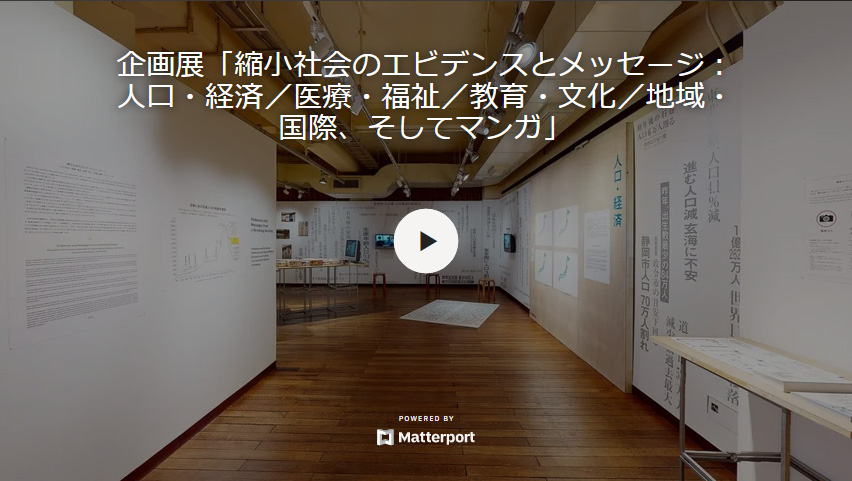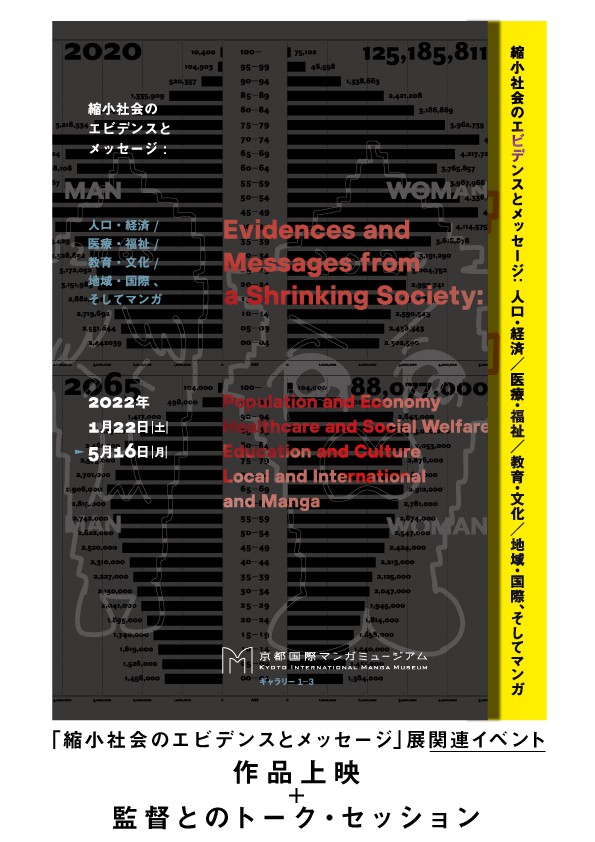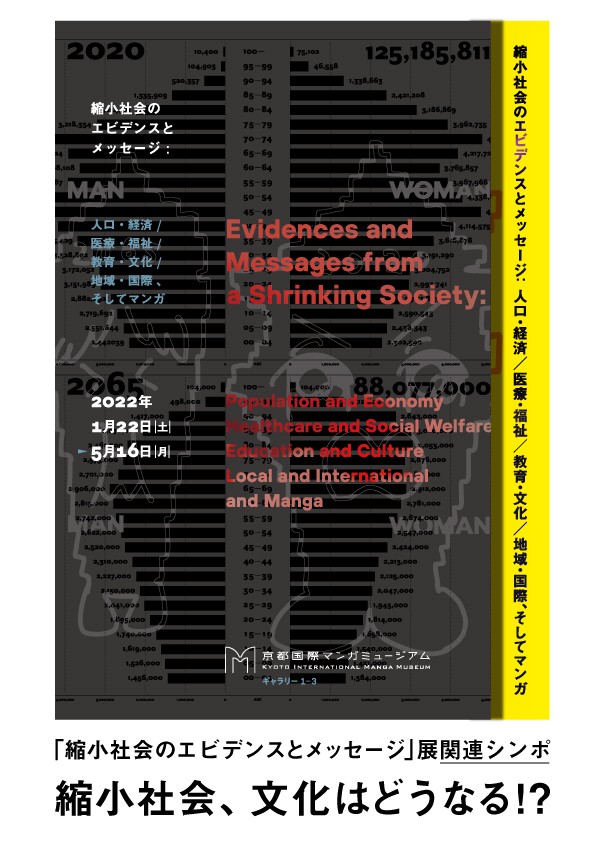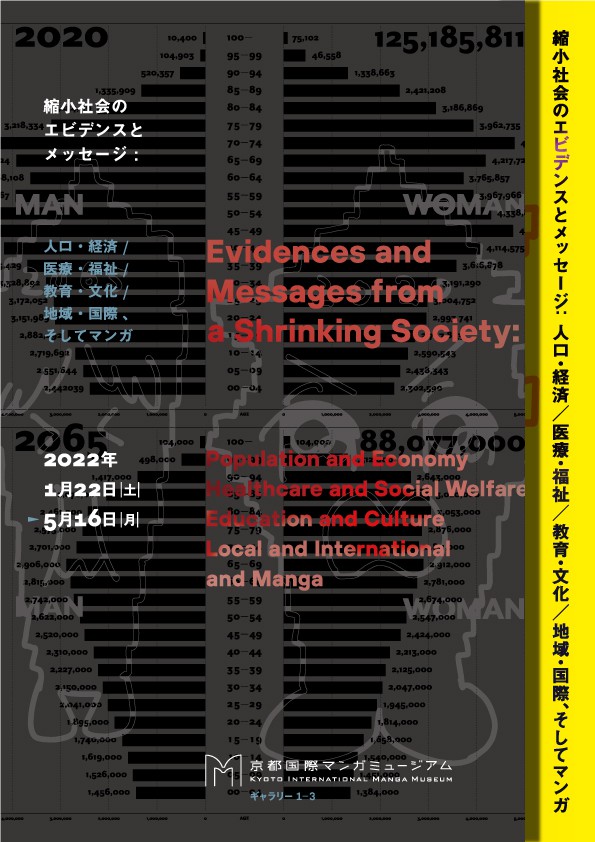
Evidences and Messages from a Shrinking Society
Population and Economy; Healthcare and Social Welfare; Education and Culture; Local and International - and Manga.
2022/1/22(Sat)~ 5/16(Mon)
International Research Center for Japanese Studies (Nichibunken) and Kyoto Seika University have an agreement and these institutions run a collaborative research group called "Cultural Creativity in a Shrinking Society: Individuals, Networks, Capital, and Systems". This exhibition introduces the topics from the research group. Also, this exhibition is organized as part of the project "Visualization and sophistication of front line research utilizing museums and exhibitions" by the National Institutes for the Humanities.
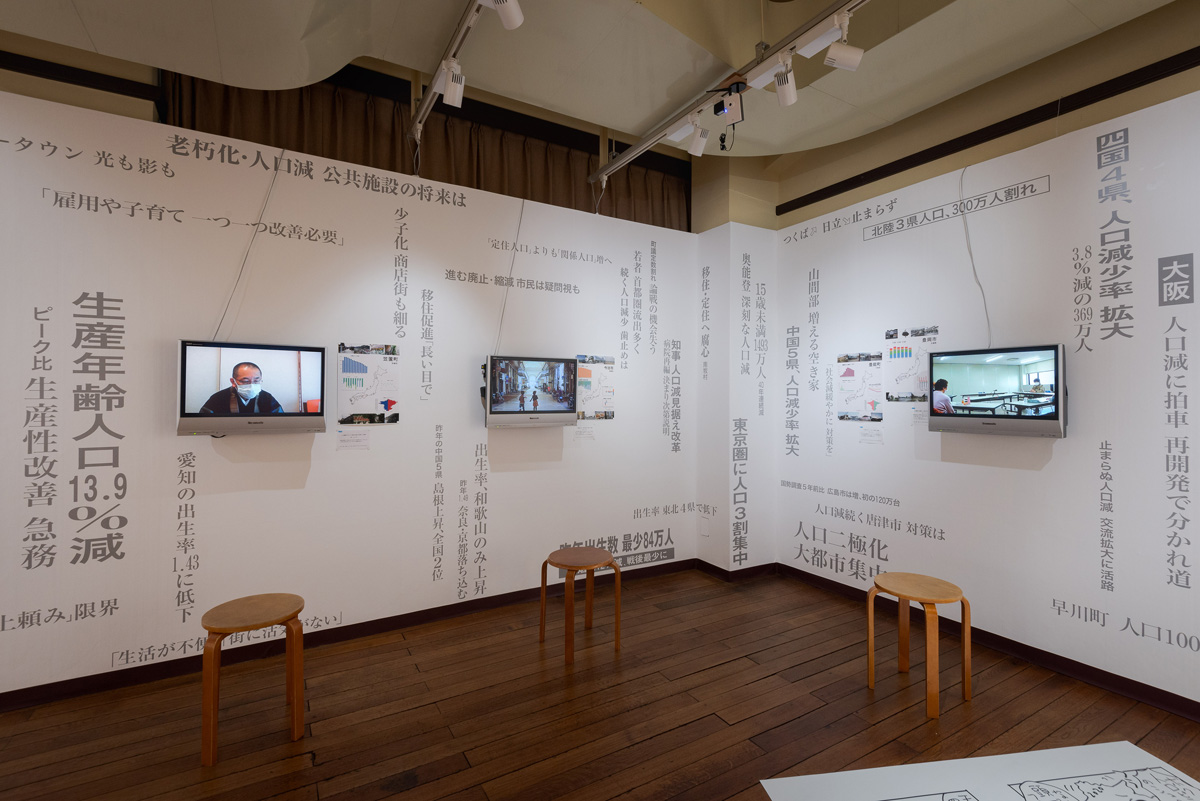
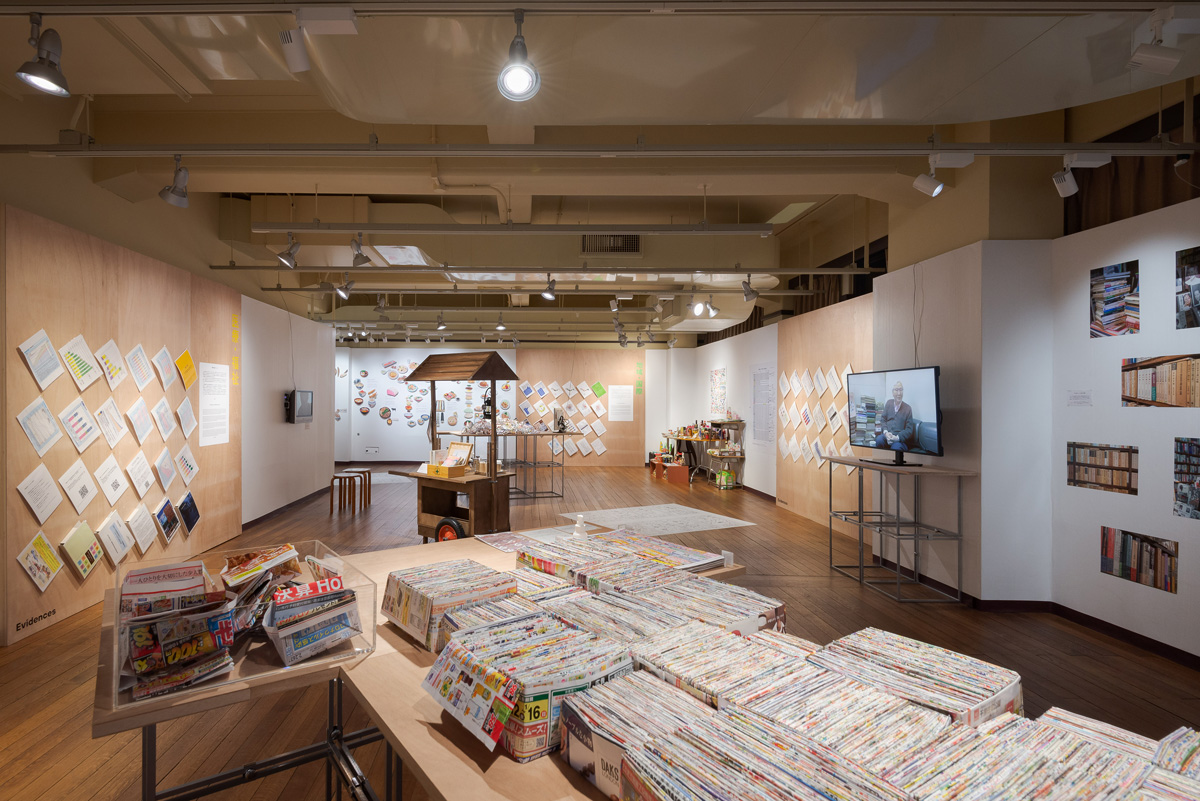
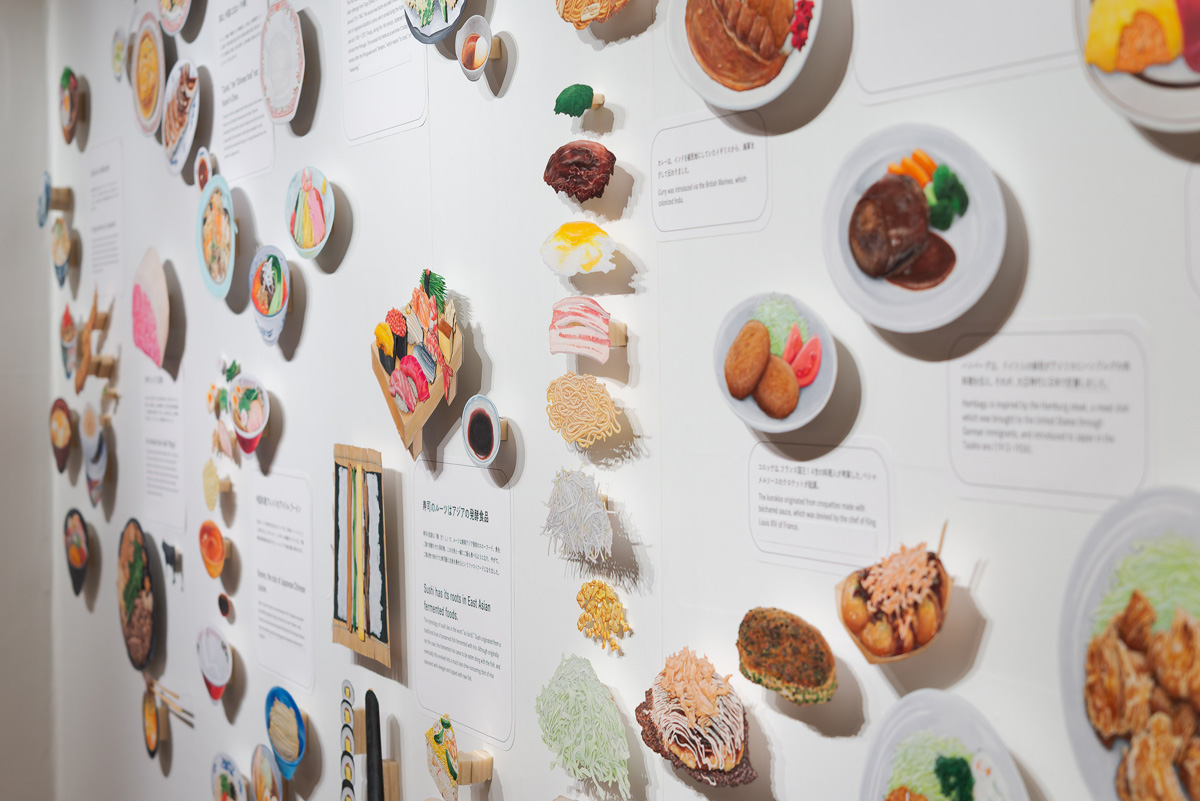
Closures
Every Tuesday and Wednesday (except 2/23, 5/4, 5), and Thursday 2/24.
Venue
2F Galleries 1, 2 and 3
Online Ticket
*Same-day tickets can be purchased at the ticket vending machine at the entrance on the day of the
*You can purchase the admission ticket at the ticket vending machine when you enter the museum on the day you visit, or you can purchase it online in advance.
Organizers
Collaborative research group “Cultural Creativity in a Shrinking Society: Individuals, Networks, Capital, and Systems” International Research Center for Japanese Studies (Nichibunken) (Project of "Visualization and sophistication of front line research utilizing museums and exhibitions" by the National Institutes for the Humanities), Kyoto Seika University International Manga Research Center, Kyoto International Manga Museum
Planners
Yamada Shoji (professor at the International Research Center for Japanese Studies), Hattori Keizo (professor at Ryukoku University), Hattori Tadashi (professor at Konan University), Tanikawa Takeshi (affiliate visiting professor at Waseda University)
Exhibition Collaborators
Takahashi Kohei (artist), Shiriagari Kotobuki (manga artist)
Content
Japan’s population is decreasing at a rapid rate, having peaked in 2008 at 128 million. It is estimated that it will be 100 million in 2053, and half of its present level in 2100. Numerous social problems have surfaced as Japan’s population has decreased and aged, and economic affluence has been lost. What will be the appearance of a society, of an economy and of cultural activities that are suited to such a population? How might we give vitality to social and cultural activities, and ensure the fulfillment of each, without confining them to an economic context? Perhaps if we survey the divergent forms of cultural activity within our shrinking society, we may find a way of weaving together a cultural vitality that is quite distinct from the past.
This exhibition is divided into four sections, which from eight perspectives present the "evidence": data which shows the reality of the "shrinking society"; and the "messages": hints for living in such a reality.
Exhibition structure
Population and economy
Some local governments are on the brink of survival due to the declining population. Demand decreases, economy become stagnant, and the population decreases further. On the other hand, there is an opinion that riches per capita may increase. Here we consider the reality of population decline, and the affluence of regions and individuals.
Main exhibits
・Simulation video of Japanese declining population
・Video message from shrinking regions
Healthcare and Social Welfare
The social isolation of the elderly is severe. Efforts are being made to prevent isolation through cultural activities that build relationships with the community. The ever-increasing number of people with disabilities taking part in creative endeavors also gives us hints for living in a shrinking society.
Main exhibits
・Creative work by people with disabilities, strengthening relationships
・'Cafe carts' that create a relationship with society
Education and culture
The publishing industry is shrinking significantly. The distribution circuit for sending quality discourse out to the world has been closed off by publishers going bankrupt and the closure of bookstores. Schools are also shrinking rapidly. On the other hand, efforts are underway to regenerate closed school buildings into cultural facilities.
Main exhibits
・Photographs about publishing and bookstore cutbacks
・Materials related to the reutilization of schools in Kyoto city
Regional and international
The Japanese economy can no longer function without a foreign labor force. However, Japan is reluctant to accept immigrants and there are endless human rights violations against foreign workers. Nevertheless, if you look closely at the food that represents Japanese culture, you can see the influence of foreign culture.
Main exhibits
・World ingredients that can be purchased in Japan
・Schematic illustration of "multinational Japanese food" by Kawamura Jumpei (original artwork)
Other
Manga drawn by Shiriagari Kotobuki
Four-panel manga drawn by Shiriagari Kotobuki on the eight themes of this exhibition will be exhibited.
Manga and reference book corner
Manga works and reference books about the theme of a shrinking society will be on display.
Online exhibition in VR space
This exhibition will be reproduced in virtual space on the internet. (Scheduled to be launched in early February. Details will be announced on our homepage at a later date.)
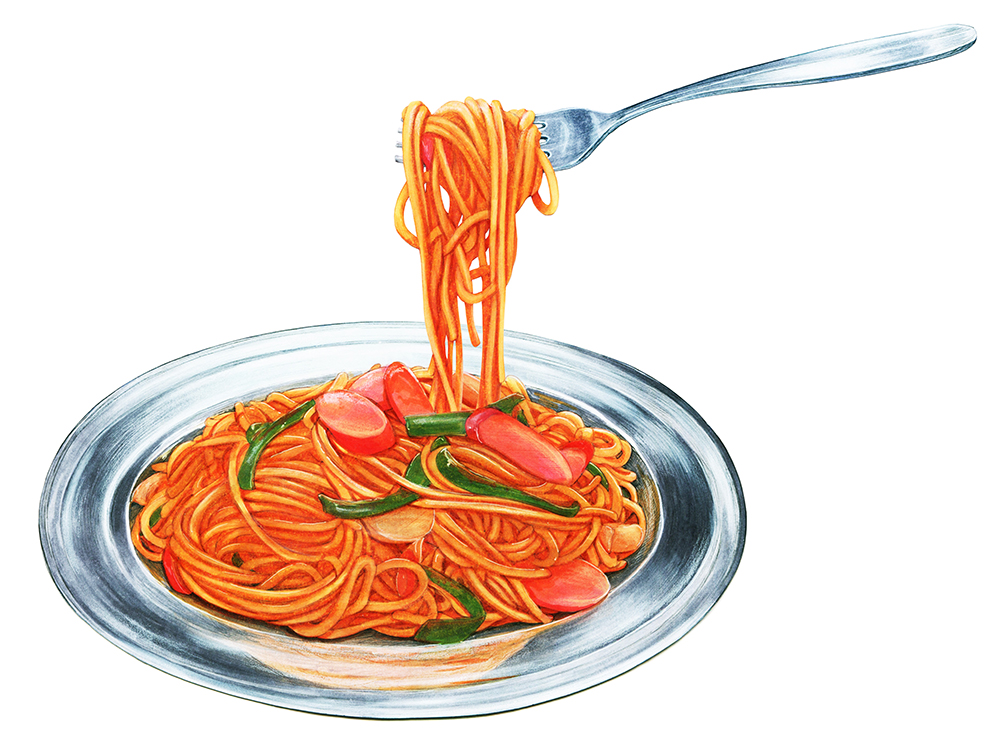
©Kawamura Jumpei
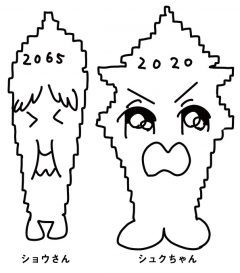
©Shiriagari Kotobuki
ー Exhibition Scenery ー

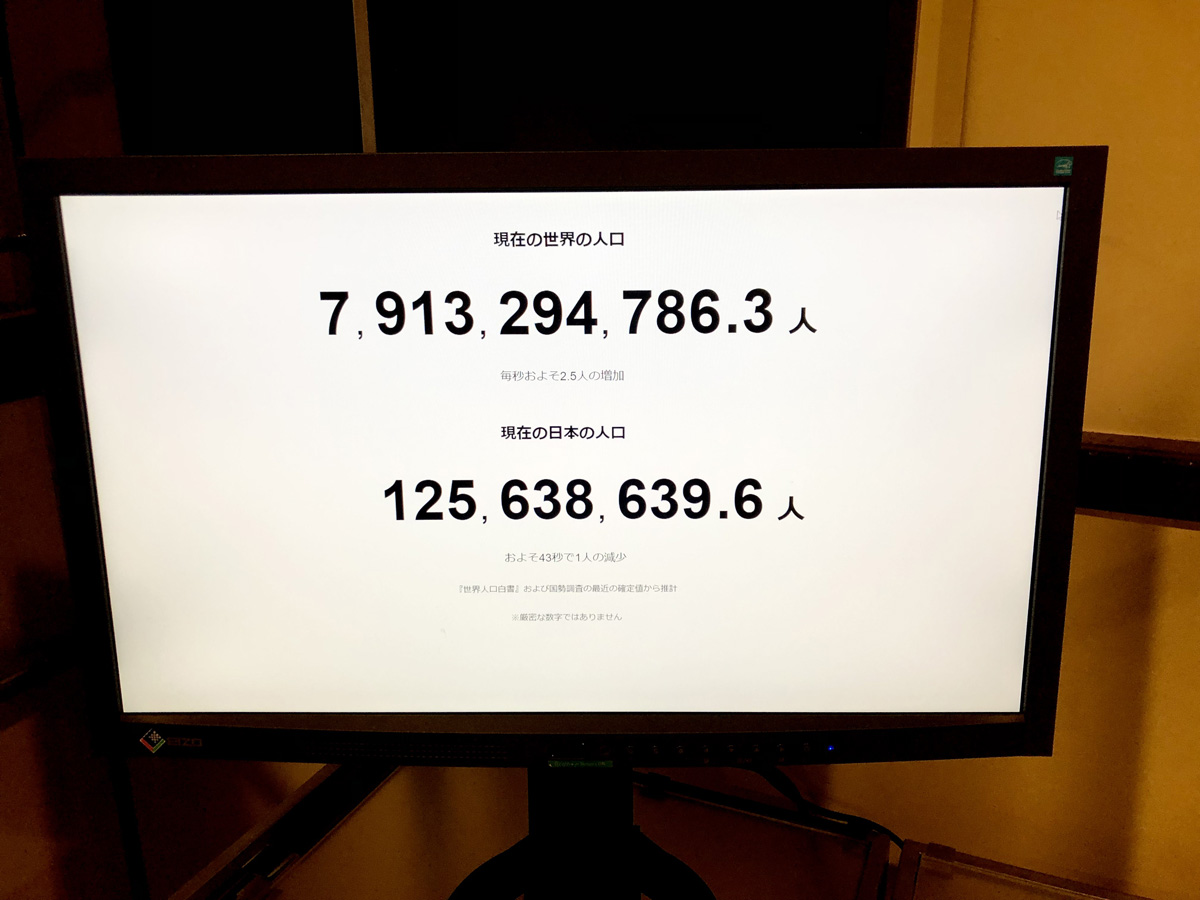
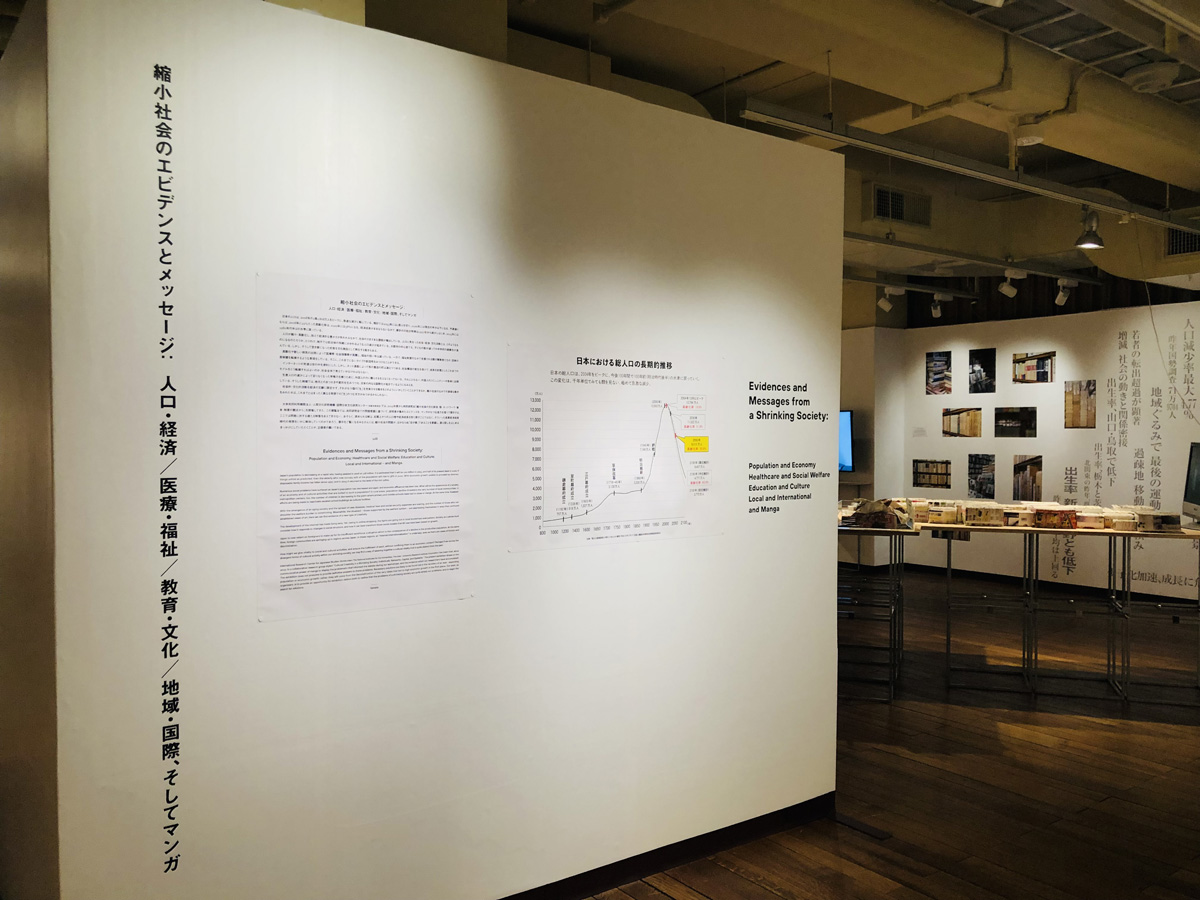

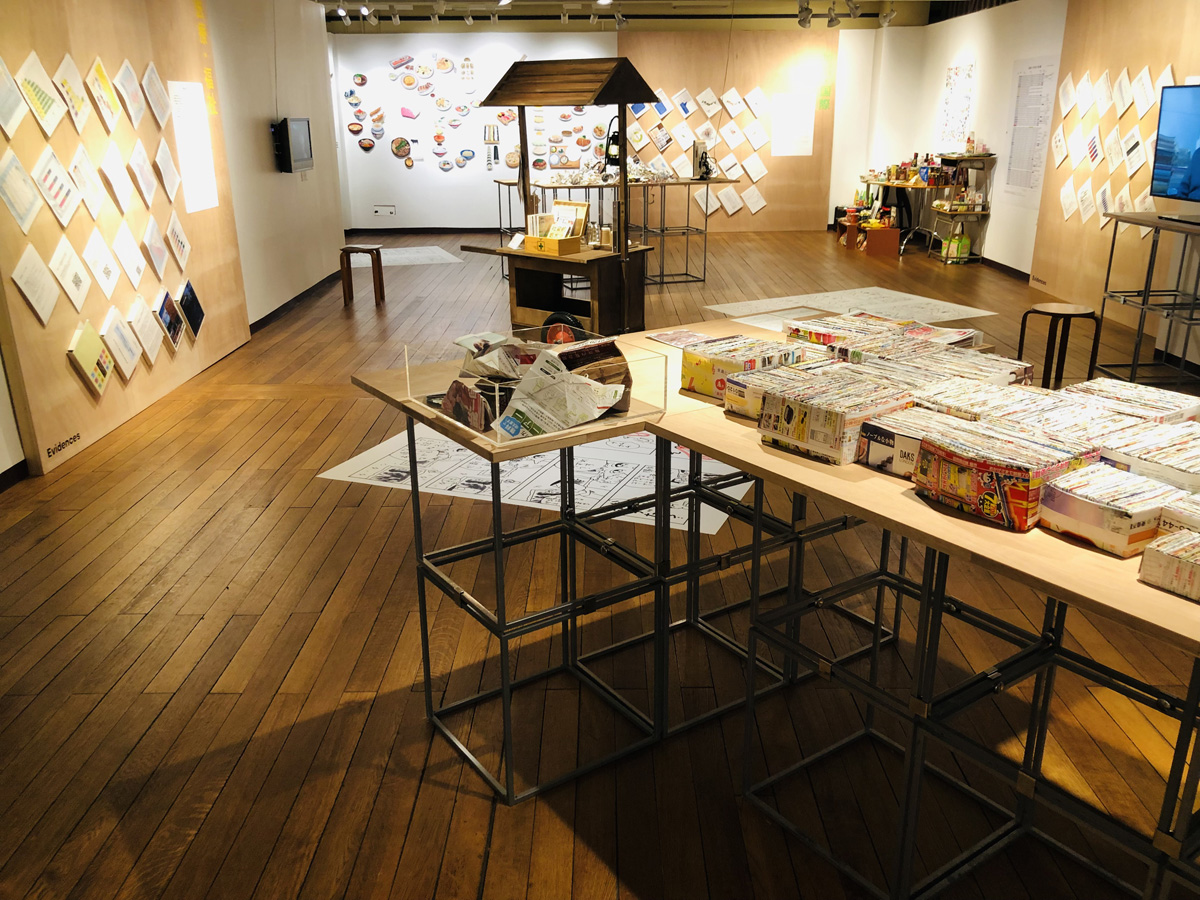
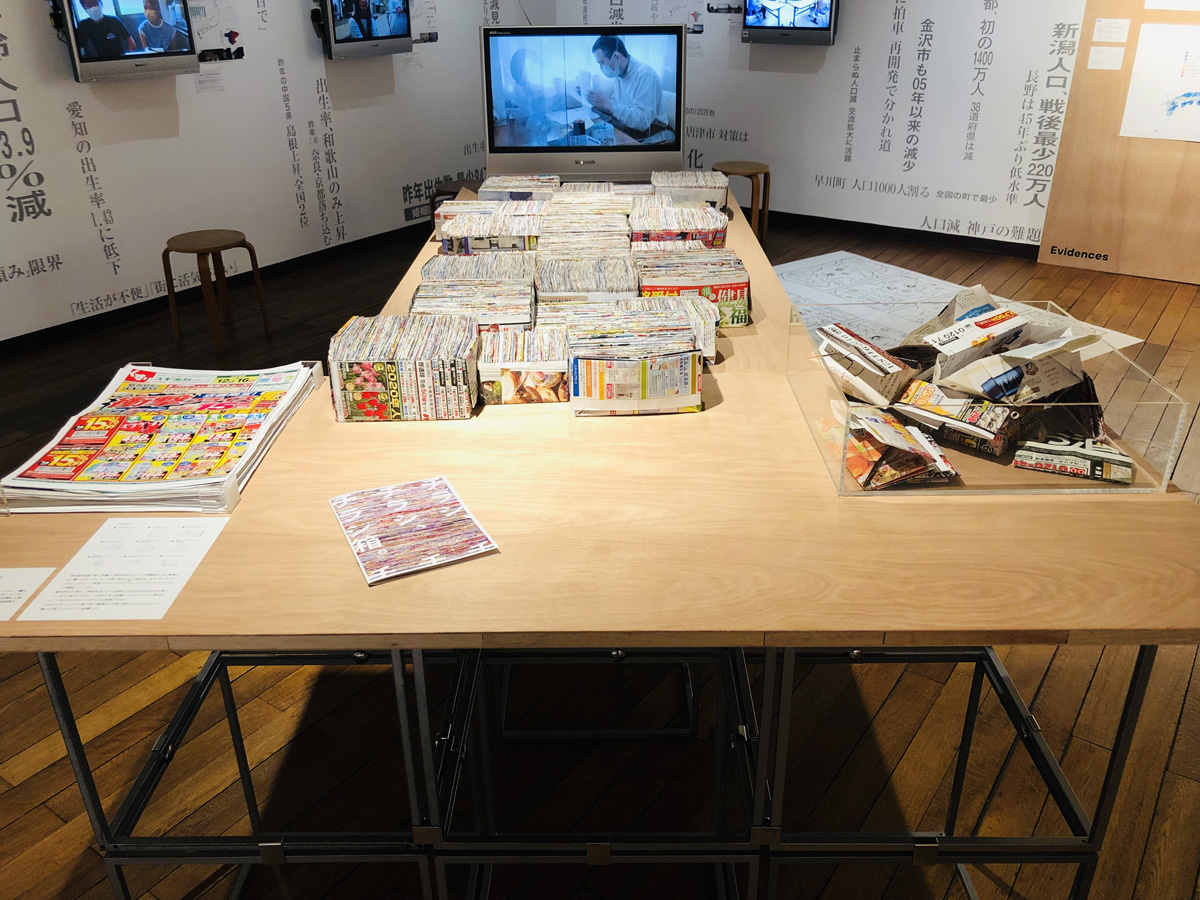
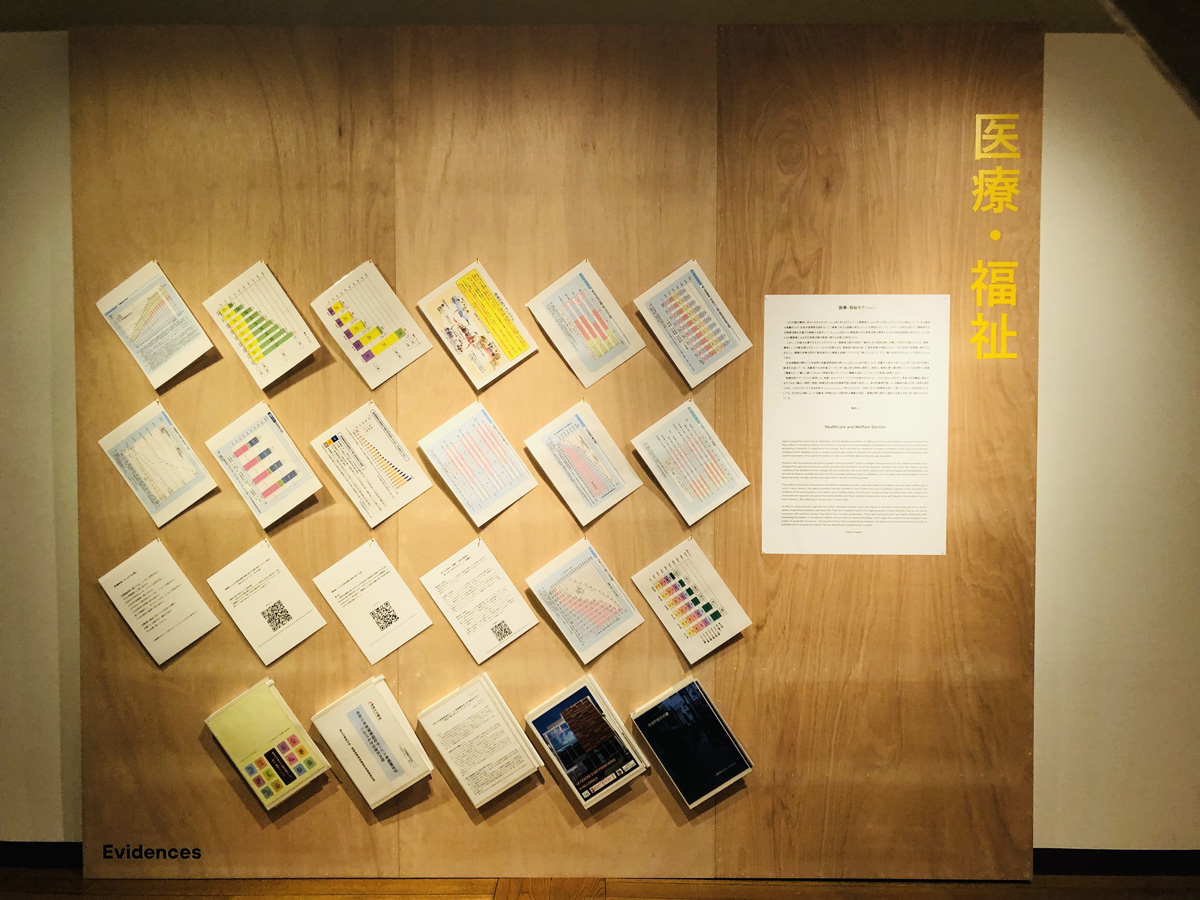
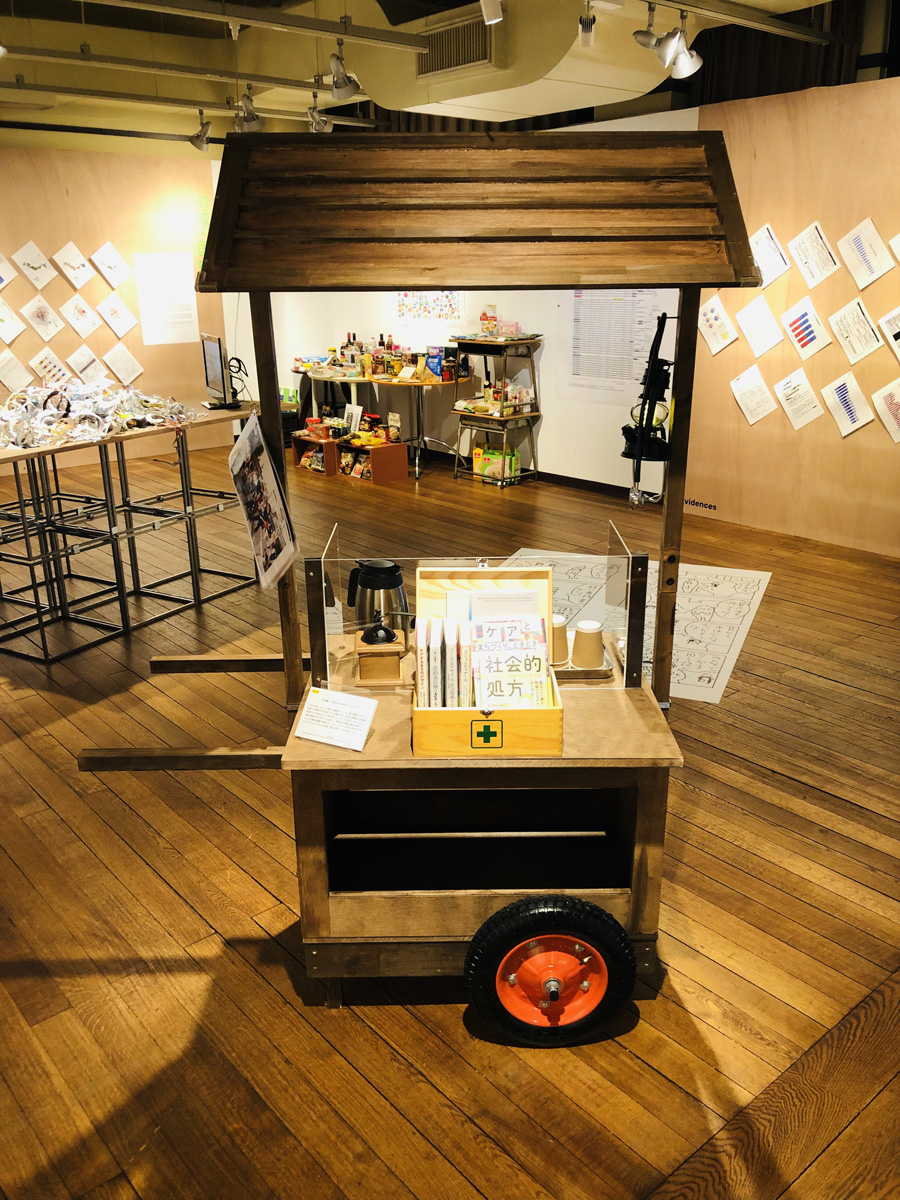

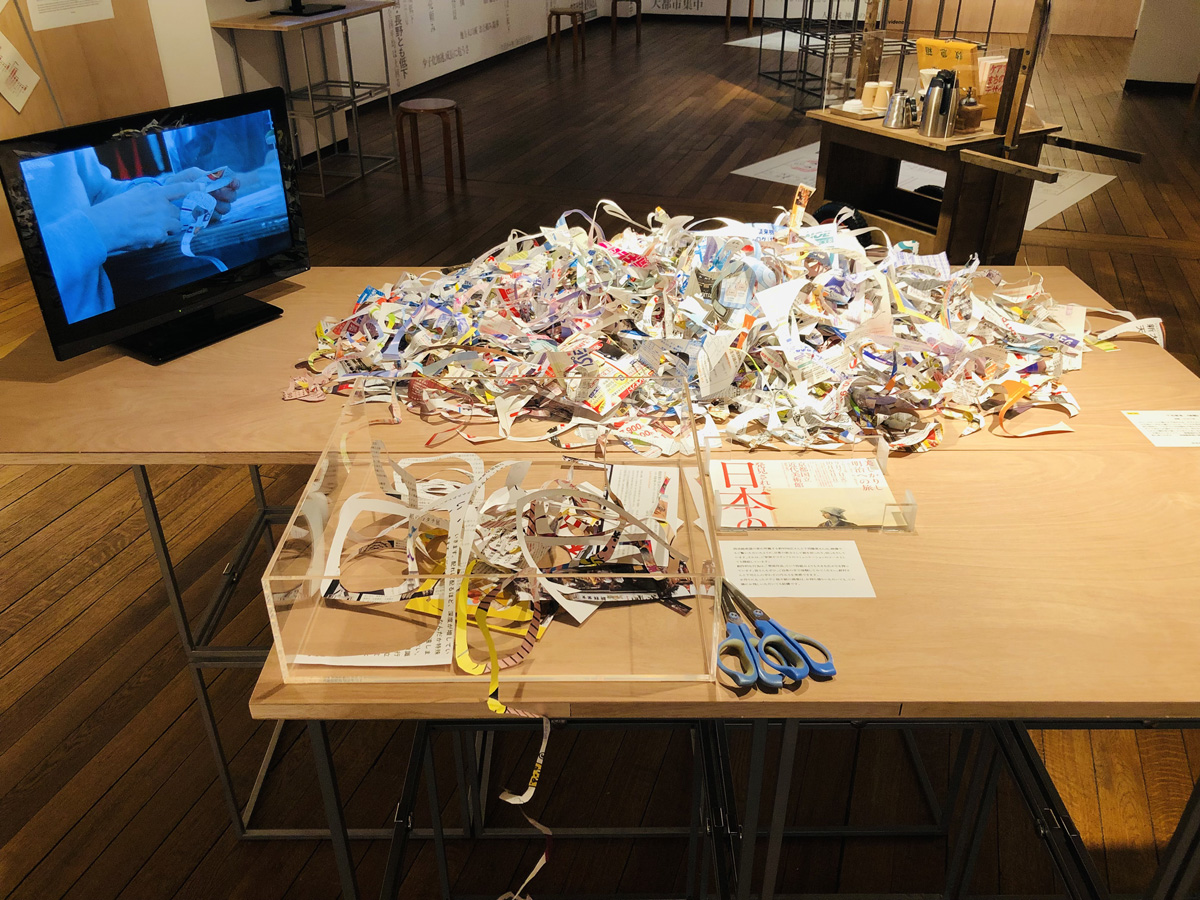
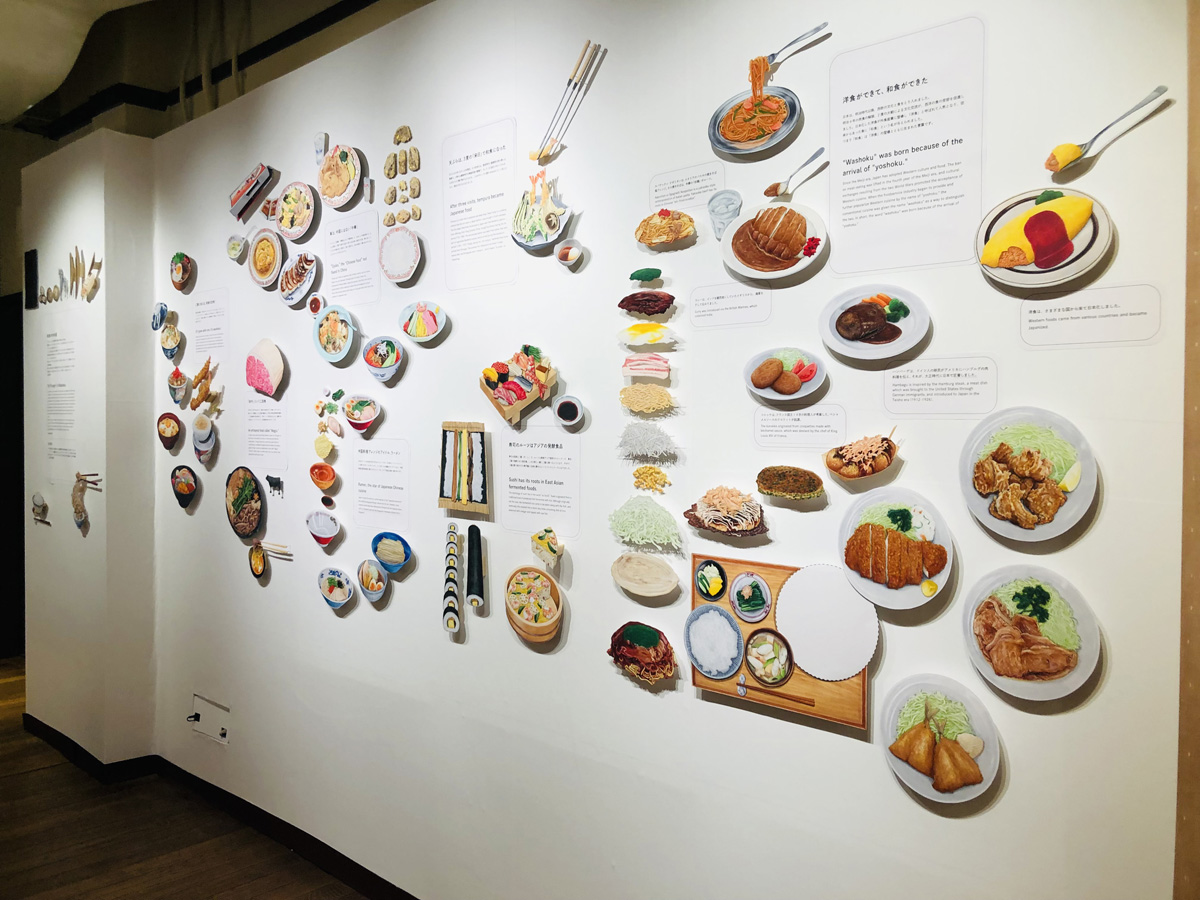
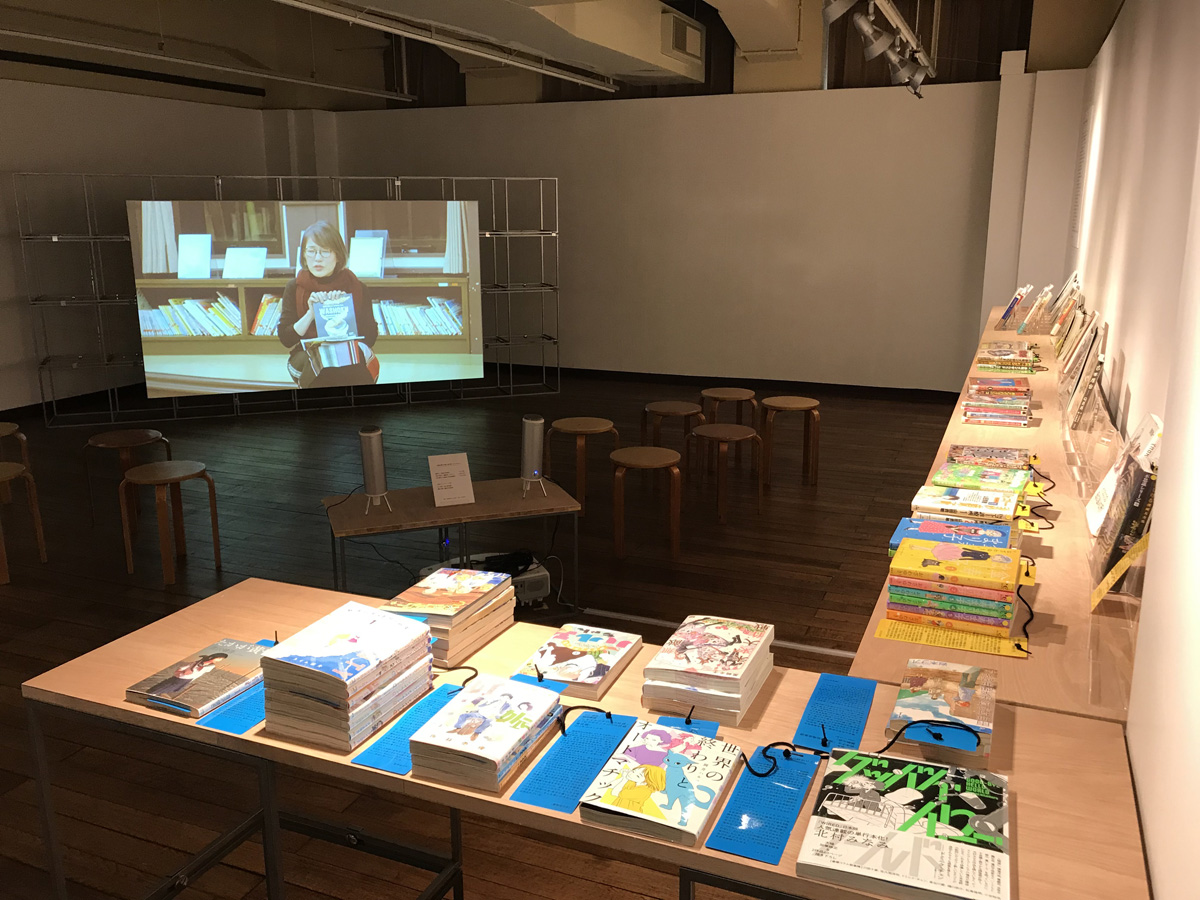
Shiriagari Kotobuki
A manga artist born in Shizuoka prefecture in 1958, Shiriagari received the 5th Tezuka Osamu Cultural Award for Manga Excellence in 2001 for his philosophical work "Yajikita in DEEP" (Comical pair in DEEP), which focuses on life and death, yet had underlying humorous gag tones. Shiriagari has created many works that show a keep sensitivity to society, including the "Jiji Oyaji" (Current affairs father) series, which won the 46th Bungeishunju Manga Award in 2000, and "Chikyu boueika no hitobito" (People of the Earth military defense) serialized in "Asahi Shimbun". The compilation "Ano hi kara no manga" (Manga from that day) of his work "Umibe no mura discontinuous day" (Seaside village discontinuous day) drawn immediately after the 3.11 disaster, won the 15th Cultural Agency Media Arts Festival Manga Division Excellence Award in 2001.
Takahashi Kohei
An artist focusing on documentary-style footage, Takahashi uses performance records and archive material to explore areas that are often overlooked, and creates works that visualize the history and stories hidden within. Takahashi's recent exhibitions include "Korekushon to no taiwa: Muttsu no heya" (Dialogue with the collection: Six rooms) at the Kyoto City KYOCERA Museum of Art in 2021, "Setsudan shite miru – Futari no Kohei" (Work on five hypotheses to cut off...) at the Toyota Municipal Museum of Art in 2017, and the solo exhibition "Takahashi Kohei machi no karinui, ko to ayumi" (Transitional Cityscape, Individual paths) at the Hyogo Prefectural Museum of Art in 2016.
International Research Center for Japanese Studies
Established in 1987, the International Research Center for Japanese Studies is a research institute that comprehensively studies Japanese culture from an international and academic perspective. Collaborative research is conducted by roughly 30 full-time and specially appointed faculty members, about 15 foreign researchers, and more than 500 university researchers.
